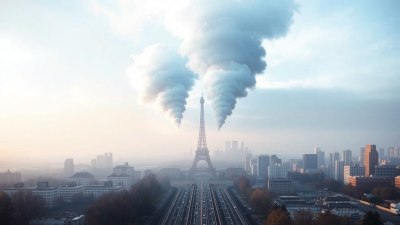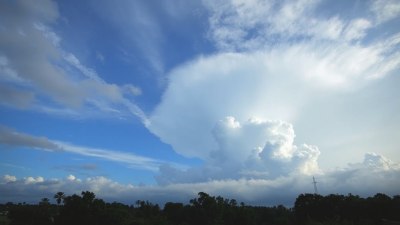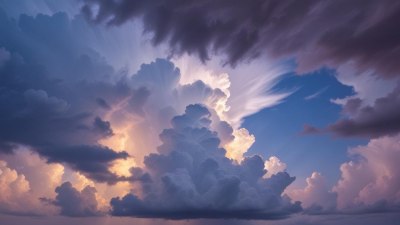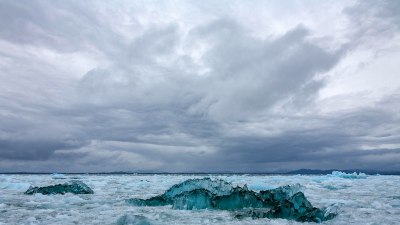Why the Arctic Tundra is Basically Earth’s Silent VIP Section
Explore the Arctic Tundra, its unique ecosystem, and why it deserves special attention.
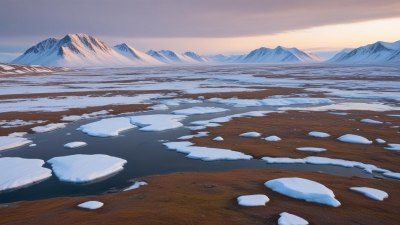
This image was created with the assistance of Freepik
The Arctic Tundra, often referred to as Earth’s silent VIP section, is a unique and delicate ecosystem that plays a crucial role in the planet's climate and biodiversity. Spanning across large areas of the northern hemisphere, this biome is characterized by its cold temperatures, permafrost, and limited vegetation. The tundra is not just a barren landscape; it is a vibrant habitat teeming with life in its own right.
Understanding the Arctic Tundra
The Arctic Tundra is defined by its geographic location above the tree line in the Arctic, where trees cannot grow due to severe climatic conditions. This region encompasses parts of countries such as Canada, Russia, Greenland, and the northern parts of the United States. The climate is marked by harsh winters, with temperatures plunging to below -40 degrees Fahrenheit, while summers are brief and cool. Despite these extreme conditions, the tundra supports a variety of life forms, adapted to thrive in this unique environment.
Climate and Geography
The geography of the Arctic Tundra is dominated by flat, low-lying terrain that includes wetlands, lakes, and rivers. The soil in this region is primarily composed of permafrost, a layer of permanently frozen subsoil that significantly influences the ecosystems. Due to permafrost, water drains poorly, leading to the formation of numerous water bodies, which become crucial habitats for various species during the brief summer months.
Biodiversity in the Tundra
The tundra is home to a surprising variety of plants and animals that have adapted to its harsh climate. Vegetation primarily consists of low shrubs, grasses, mosses, and lichens, which are able to survive the cold and short growing seasons. This plant life provides essential food and habitat for herbivores such as caribou and musk oxen, which, in turn, support a variety of carnivores, including arctic foxes, wolves, and polar bears.
Role in Earth's Climate
The Arctic Tundra plays a significant role in regulating Earth's climate. It acts as a carbon sink, storing vast amounts of carbon dioxide in its permafrost. However, as temperatures rise due to climate change, this permafrost is beginning to thaw, releasing greenhouse gases back into the atmosphere and contributing to global warming. Thus, the tundra is not just a silent participant; its health is critical to maintaining the Earth's overall climatic balance.
Impact of Climate Change
The impact of climate change on the Arctic Tundra is profound and far-reaching. As global temperatures rise, we see shifts in vegetation patterns, with some areas experiencing greening as shrub species invade. This can disrupt local ecosystems and lead to changes in animal populations and their behaviors. Additionally, the melting ice and thawing permafrost contribute to sea level rise, affecting global coastal communities.
Indigenous Cultures and the Tundra
The Arctic Tundra is home to several Indigenous cultures that have thrived in this environment for millennia. These communities possess traditional ecological knowledge that is invaluable in understanding and preserving the tundra ecosystem. Their way of life is closely tied to wildlife and the natural rhythms of the tundra, making them key stakeholders in conservation efforts. Protecting their heritage and the environment is essential for maintaining the integrity of the tundra.
Conservation Efforts
Given the ecological significance of the Arctic Tundra, numerous conservation efforts have been initiated to protect this fragile environment. National parks and protected areas have been established in various countries to safeguard the natural habitats and allow for sustainable use of resources. International collaborations also focus on monitoring climate changes and implementing strategies to mitigate human impact on the tundra ecosystem.
Why It Matters
The Arctic Tundra is not merely a remote and silent section of the Earth; it is a vital component of the global ecosystem. Its unique environmental features and biodiversity provide critical resources for human survival and contribute to the health of the planet. Understanding its importance encourages a greater appreciation for this biome and its role in our world.
In conclusion, the Arctic Tundra is a silent yet paramount section of our planet, embodying the beauty and fragility of nature. Its ecosystems are essential for climate regulation, biodiversity, and the livelihoods of Indigenous peoples. As we face the realities of climate change, it is imperative to recognize the importance of the tundra and take action to preserve it for future generations. Respecting and safeguarding this unique environment will ensure it remains a vital part of Earth's life support system.

